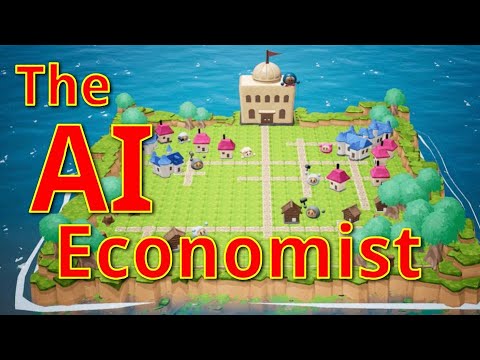Hail the AI Tax Collector! This very visual framework has RL Agents maximize their coins in a tiny world through collecting, building and trading. But at the same time, the government is also an AI trying to maximize social welfare via taxes. What emerges is very interesting.
Paper:
Blog:
Abstract:
Tackling real-world socio-economic challenges requires designing and testing economic policies. However, this is hard in practice, due to a lack of appropriate (micro-level) economic data and limited opportunity to experiment. In this work, we train social planners that discover tax policies in dynamic economies that can effectively trade-off economic equality and productivity. We propose a two-level deep reinforcement learning approach to learn dynamic tax policies, based on economic simulations in which both agents and a government learn and adapt. Our data-driven approach does not make use of economic modeling assumptions, and learns from observational data alone. We make four main contributions. First, we present an economic simulation environment that features competitive pressures and market dynamics. We validate the simulation by showing that baseline tax systems perform in a way that is consistent with economic theory, including in regard to learned agent behaviors and specializations. Second, we show that AI-driven tax policies improve the trade-off between equality and productivity by 16% over baseline policies, including the prominent Saez tax framework. Third, we showcase several emergent features: AI-driven tax policies are qualitatively different from baselines, setting a higher top tax rate and higher net subsidies for low incomes. Moreover, AI-driven tax policies perform strongly in the face of emergent tax-gaming strategies learned by AI agents. Lastly, AI-driven tax policies are also effective when used in experiments with human participants. In experiments conducted on MTurk, an AI tax policy provides an equality-productivity trade-off that is similar to that provided by the Saez framework along with higher inverse-income weighted social welfare.
Authors: Stephan Zheng, Alexander Trott, Sunil Srinivasa, Nikhil Naik, Melvin Gruesbeck, David C. Parkes, Richard Socher
Links:
YouTube:
Twitter:
BitChute:
Minds:
source


1 Comment
uakgrk